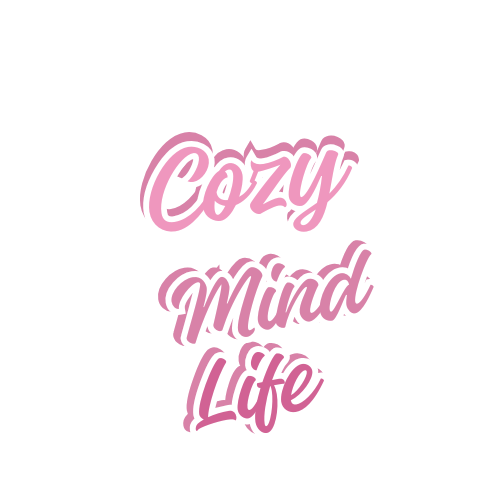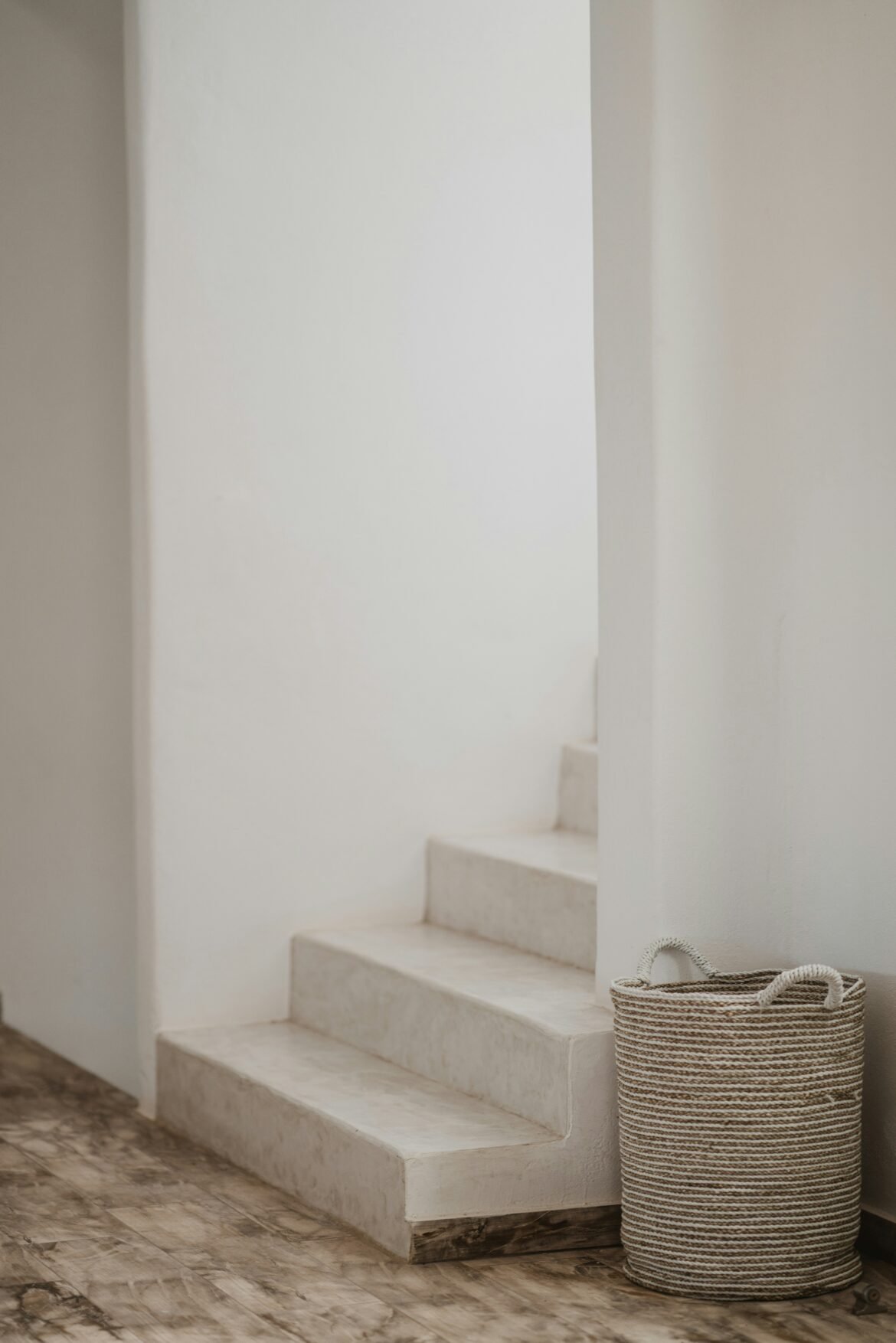How to Create a Calm, Clutter-Free Home Without Losing the Warmth
Let’s be honest — between work, kids, laundry, meals, mental load, and just life in general, our homes often become more chaotic than comforting. You clean one corner and another one magically explodes. You put something away and it comes back five minutes later. You dream of peaceful spaces on Pinterest… but your reality is piles, drawers that won’t close, and surfaces you haven’t seen in weeks.
Here’s the truth:
Your home doesn’t need to be perfect.
It just needs to work for you — not against you.
And that’s exactly where modern minimalism comes in.
Not the cold, empty kind. Not the “throw away everything you own and live with one fork” kind.
But the practical, warm, real-life version that busy women and families can actually maintain.
If you’re craving a home that feels lighter, calmer, and easier to manage, this guide is for you.
Welcome to your Ultimate Minimalist Home Guide 2025 — with realistic steps, gentle advice, and zero judgment.
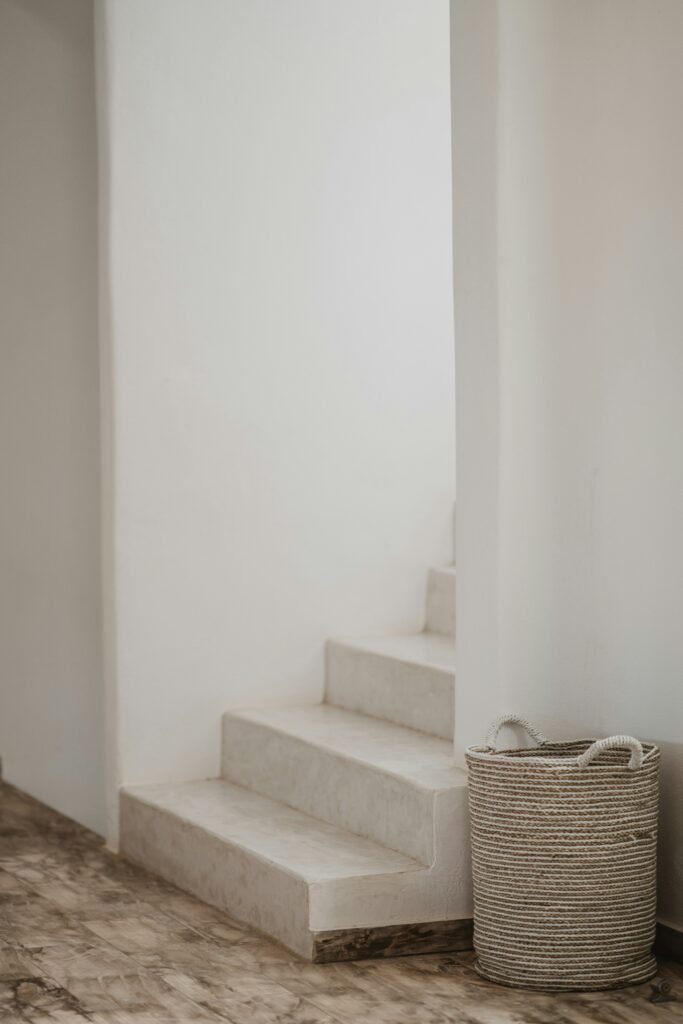
What Minimalism Really Means (And What It Doesn’t)
Minimalism gets a bad reputation because people imagine empty rooms, white walls, and soulless décor.
But real minimalism is the opposite of emptiness — it’s intentionality.
Minimalism means:
- keeping what matters to you
- removing what drains your energy
- creating a home that feels aligned with your life
- choosing ease over clutter
- breathing room over overwhelm
It is NOT:
✘ getting rid of everything
✘ living in a cold, beige box
✘ depriving yourself
✘ buying all-new minimalist furniture
✘ seeking perfection
Minimalism is actually about freedom — mental, emotional, and physical.
Less stuff = less stress.
Step 1 — Shift Your Mindset: Less Isn’t Lack, It’s Liberation
Before you touch a drawer or buy a basket, the most important step is shifting how you think about your things.
Ask yourself:
– Do I use this regularly?
– Do I love this?
– Does this item add value or just take up space?
– If I lost it today, would I truly miss it?
And here’s a big one:
If I saw this item in a store today, would I buy it again?
If the answer is no, then that item has already served its purpose.
A few mindset truths:
- Keeping something out of guilt creates emotional clutter.
- Letting go is not wasteful — keeping things you never use is what truly wastes space and energy.
- Your home is allowed to evolve as you evolve.
- Minimalism is not about deprivation — it’s about intention.
Once you release guilt and “what if I need it someday,” decluttering becomes so much easier.
Step 2 — Start Small (The Smaller, The Better)
Trying to declutter an entire house in one weekend is the fastest way to give up.
The secret to success is tiny steps:
- One drawer
- One shelf
- One basket
- One corner of a room
Why it works:
- Small wins build momentum.
- You don’t get overwhelmed.
- You actually finish what you start.
- You see immediate progress, even in 10 minutes.
Small, consistent steps beat giant, unrealistic attempts every time.
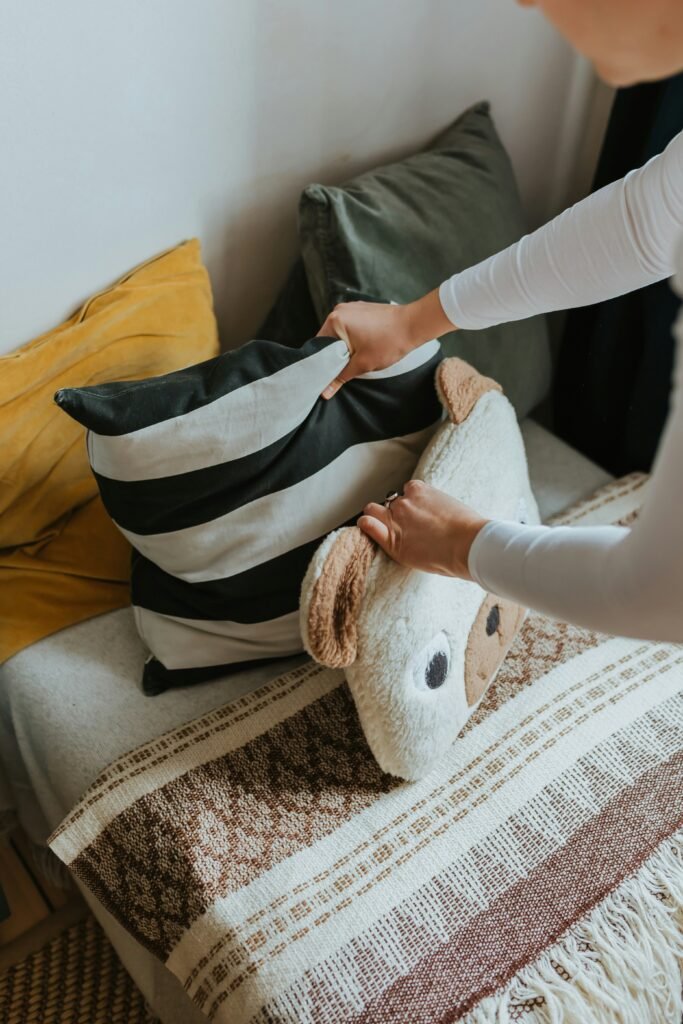
Step 3 — Declutter Room by Room (The 2025 Way)
Here’s a practical, gentle breakdown you can follow at your own pace.
The Bedroom — Your Peace Starts Here
A cluttered bedroom = a cluttered mind.
Make this your first “calm zone.”
Tips:
- Clear your nightstand — keep only what you use at bedtime.
- Sort your clothes: keep what fits your current life and body.
- Store seasonal clothing under the bed or on high shelves.
- Avoid overcrowded décor — simple, soft, peaceful feels best.
Your bedroom should feel like a retreat, not a storage room.
The Kitchen — Simplify for Sanity
Kitchens get messy fast, especially if you cook daily. Minimalism makes cooking easier.
Tips:
- Toss expired food and spices.
- Keep only gadgets you actually use — not aspirational ones.
- Clear your counters (visual clutter = instant stress).
- Store items in the zone where you use them.
- Use clear bins in the fridge for visibility.
A minimalist kitchen is not empty — it’s functional.
The Bathroom — Calm Over Chaos
Bathrooms are often tiny, so clutter shows immediately.
Tips:
- Toss old products, expired skincare, and dried nail polish.
- Organize drawers with small bins.
- Use clear jars for cotton pads, q-tips, or hair ties.
- Limit what stays on the counter to daily essentials.
A clean bathroom feels like a mini spa — even when life is hectic.
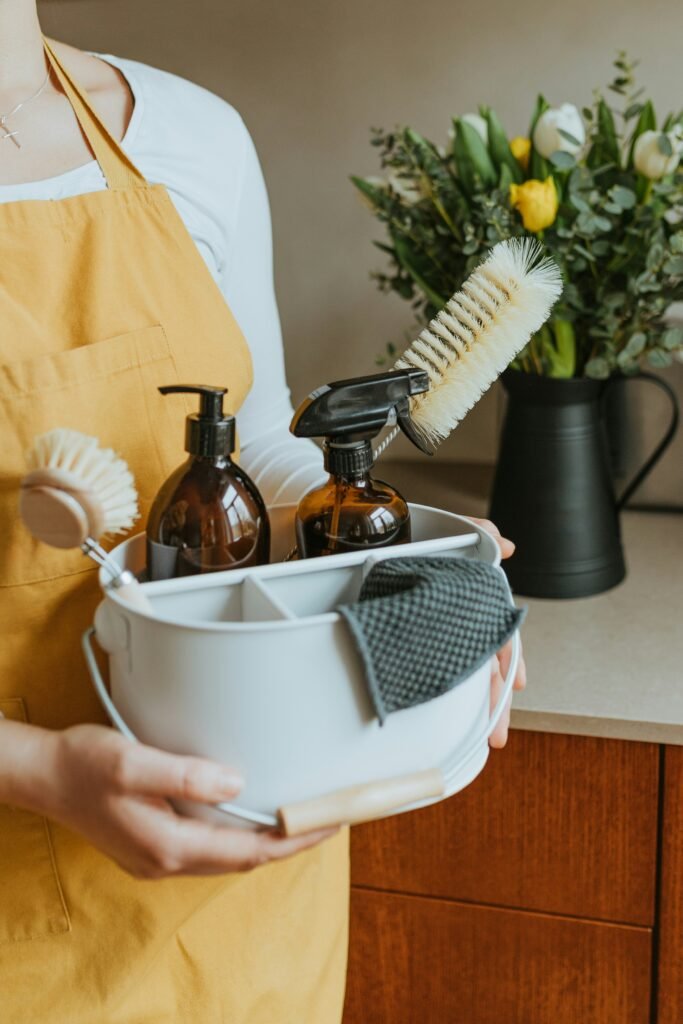
Laundry Room — Your Essential Hub
A functional laundry area saves so much time and stress.
Tips:
- Sort items into labeled baskets (whites, darks, towels).
- Hang a folding drying rack to save space.
- Store cleaning supplies in grouped bins.
Even small laundry spaces can become extremely efficient.
Kids’ Rooms — Less Stuff = Less Stress
If you have kids, you know the struggle. Minimalism can truly help them too.
Tips:
- Rotate toys — fewer options = more creativity.
- Use labeled bins at kid-level.
- Donate outgrown clothes and toys regularly.
- Create “zones” — sleep, play, reading.
Minimalism helps kids focus, play better, and clean up more easily.
Step 4 — Give Every Item a “Home”
If something doesn’t have a designated place, it will become clutter.
Assign homes for:
- keys
- toys
- toiletries
- tech
- cleaning supplies
- photos
- paperwork
Use:
- baskets
- drawer dividers
- clear containers
- wall hooks
- vertical shelving
- tray organizers
The easier something is to put away, the more likely it will stay away.
Step 5 — Create Visual Breathing Room
One of the biggest secrets of minimalism is empty space.
Empty space is not wasted space —
It is peace, clarity, calm.
Try:
- keeping counters mostly clear
- leaving at least one surface per room empty
- reducing décor to just a few pieces you truly love
- giving your eyes places to rest
Your home will instantly feel lighter.
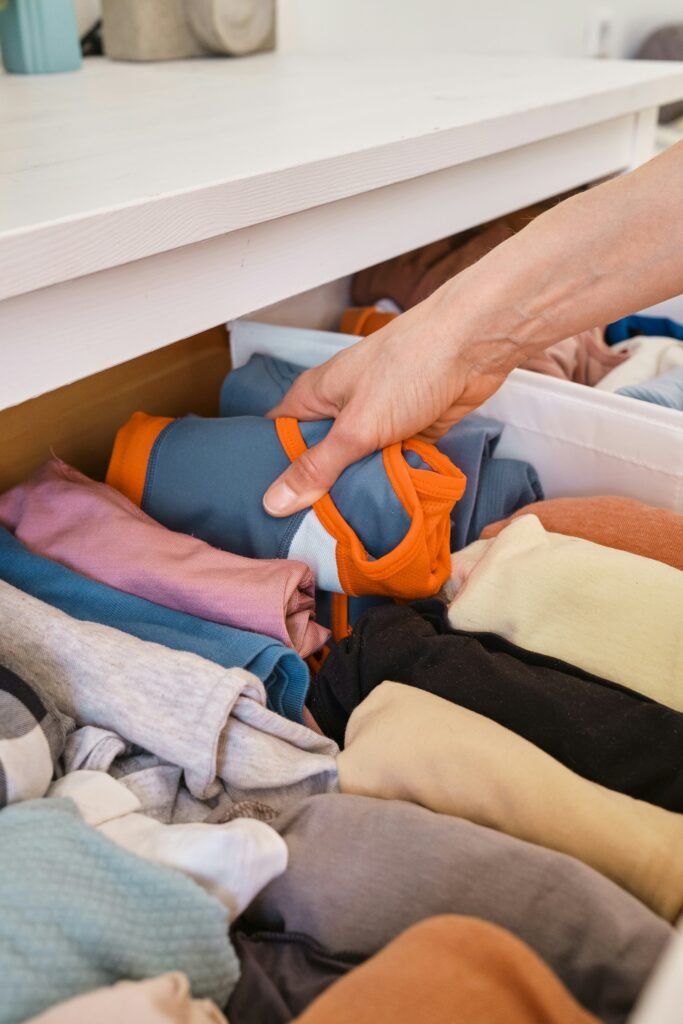
Step 6 — Make Clean-Up Easy (Minimalism = Efficiency)
Minimalism isn’t just about aesthetics — it’s about systems that make life easier.
Examples:
- Fewer items → faster cleaning
- Labeled bins → no more searching
- Clear surfaces → easy to wipe
- Less décor → less dust
- Organized closets → easier mornings
Minimalism saves time, energy, and stress — every single day.
Step 7 — Revisit Often (Your Home Evolves With You)
Minimalism isn’t something you do once and forget.
It’s an ongoing practice — gentle, flexible, forgiving.
Do quick monthly check-ins:
- a drawer
- a shelf
- a closet
- kids’ toys
- the pantry
Your needs change. Your home should adapt too.
Final Thoughts — Minimalism Isn’t About Less, It’s About More
More peace.
More clarity.
More space.
More time.
More room for what matters.
Minimalism is not a style.
It’s a lifestyle — and a very kind one.
Start small.
Move slowly.
Let it feel good, not stressful.
Your home doesn’t need to be perfect — it just needs to support the life you want.
And that life can begin today, with one drawer, one decision, one moment of clarity.
FAQ — Minimalist Home
1. What is the first step to becoming minimalist?
Start with your mindset, then declutter one tiny area at a time.
2. Do I have to get rid of everything to be minimalist?
No! Keep what you use and love. Minimalism is personal.
3. How do I maintain a minimalist home?
Give everything a home, revisit decluttering often, avoid impulse purchases, and keep surfaces clear.
4. Can you be minimalist with kids?
Absolutely — minimalism actually makes family life easier through toy rotation and simple organization.
5. Does minimalism save money?
Yes. You stop buying duplicates, unnecessary items, and random décor that only adds clutter.
